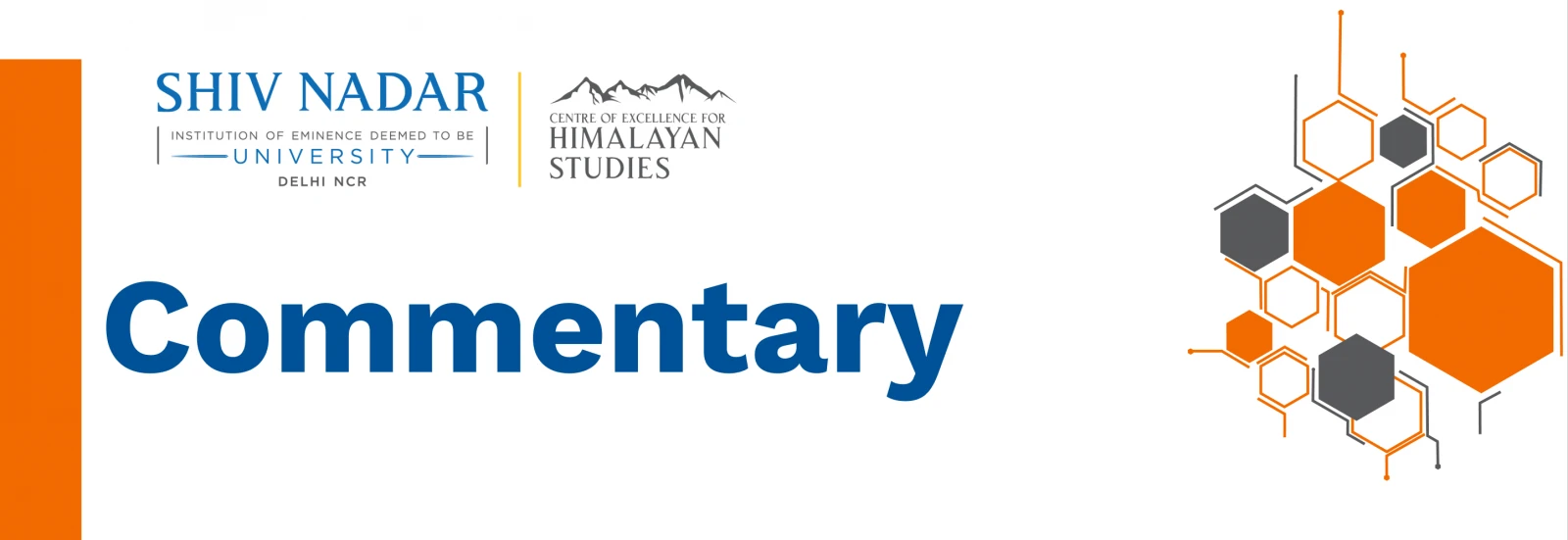
3 October 2025
Challenges Remain in the India-China Relationship Despite Bilateral and Multilateral Bonhomie
Seven years after he last went to China for a Shanghai Cooperation Organization (SCO) summit, Indian Prime Minister Narendra Modi was back for another summit. Much, however, has changed since 2018 both in India-China bilateral ties and in the international political and economic situation.
From the 2018 and 2019 ‘informal summits’ between Modi and Communist Party of China General Secretary and Chinese President Xi Jinping that were supposed to give a new direction to India-China ties after the Doklam clash of 2017, the relationship deteriorated quickly. The Chinese transgressions across the Line of Actual Control (LAC) in 2020 culminated in troop fatalities in the Galwan valley in mid-June that year. New Delhi responded militarily with a massive build-up of troops and a rapid expansion of border infrastructure that continues to date.
Economically, however, India’s restrictions on Chinese trade, investments and even apps as well as on visas for Chinese citizens and the suspension of direct flights are all likely to be removed gradually over the next few months. This is being seen as a move forced on India because of American president Donald Trump’s imposition of an additional 25% tariffs on Indian goods, owing to India’s buying of oil from Russia and the belief that this somehow keeps the Russian war going in Ukraine. This makes India along with Brazil one of the nations that the US has imposed the highest tariffs on. It is worth noting, however, that even though China buys more oil from Russia than India does, the US has not imposed similar tariffs on China.
This then brings us to the question of why India finds itself in such a pass. While the Indian armed forces responded as well as they could to China’s transgressions, Indian businesses have fallen short in terms of their understanding of the economic and security challenges posed by Chinese companies and goods and have, therefore, also found themselves woefully underprepared as the global economic situation and India’s own economic relationship with a major trading partner like the US has taken a turn for the worse. That the government’s own economic policies have had a role to play is perhaps evident from its recent announcement it was simplifying the GST tax structure.
While the timing of Modi’s visit to China is not linked to his visit does take on added bilateral and multilateral significance because of the American action. The visit is part of a “normalisation process” kicked off by the two leaders when they met in Kazan in October 2024. Even if several issues remain outstanding, including the demobilisation of the roughly 50,000 troops on each side of the LAC, the attempt will now be to put aside security issues for now as India grapples with more serious economic concerns. Its huge trade deficit with China apart, India has also been subject to Chinese economic coercion in the past few months in the form of export restrictions on fertilizer raw material, tunnel boring machines, and rare earth magnets required for India’s EV car industry among other things. Modi will hope these restrictions will be lifted and also that the incentive of the Indian market will attract much needed Chinese investments and technology transfers. It remains to be seen whether the Chinese will make any substantive concessions.
On the multilateral front, New Delhi will sell the idea of its ‘strategic autonomy’ by engaging in such platforms as the SCO and BRICS. After, an all-in embrace of the US for most of his tenure, Prime Minister Modi will find it a useful corrective to refocus his attentions on other parts of the world. He has certainly achieved some substantial deals during his visit to Japan that preceded the one to China but diplomatically India will also need to put greater stress and initiative into its ties with countries of the Global South.
However, the challenge for India will be that China will sell India’s presence at the SCO summit alongside Russian President Vladimir Putin to paint the picture of an anti-West, anti-US front. Beijing will also expect India to be more positive about joining multilateral trading arrangements like RCEP where China is a leading player. Given that the US is widely seen in India as an essential bulwark against China, it is too soon to say American policies will push India towards Russia and China over the longer term. It is very likely Indian policymakers will try to work on the relationship with the US to get it back to even keel, even if they have to make concessions to Washington DC.
In the meantime, though, New Delhi will hope that engaging with Beijing, will also relieve Chinese pressure in its own immediate neighbourhood – Chinese military and other support for Pakistan during Operation Sindoor is to recent to be forgotten.
Given the high levels of distrust in the India-China relationship Prime Minister Modi’s presence in China for the SCO summit and the warm Chinese welcome to him it can only be termed as part of hedging strategies by both countries in order to navigate the upheavals created by the Trump administration’s international policies.
This article was originally published in Malayalam as Jabin T. Jacob and Anand P. Krishnan. 2025. ‘ചാരുന്നേയുള്ളൂ ; ഇന്ത്യ ചായുന്നില്ല’ (Only Leaning, India is Not Aligning). Malayala Manorama 2 September.
.
Share this on: